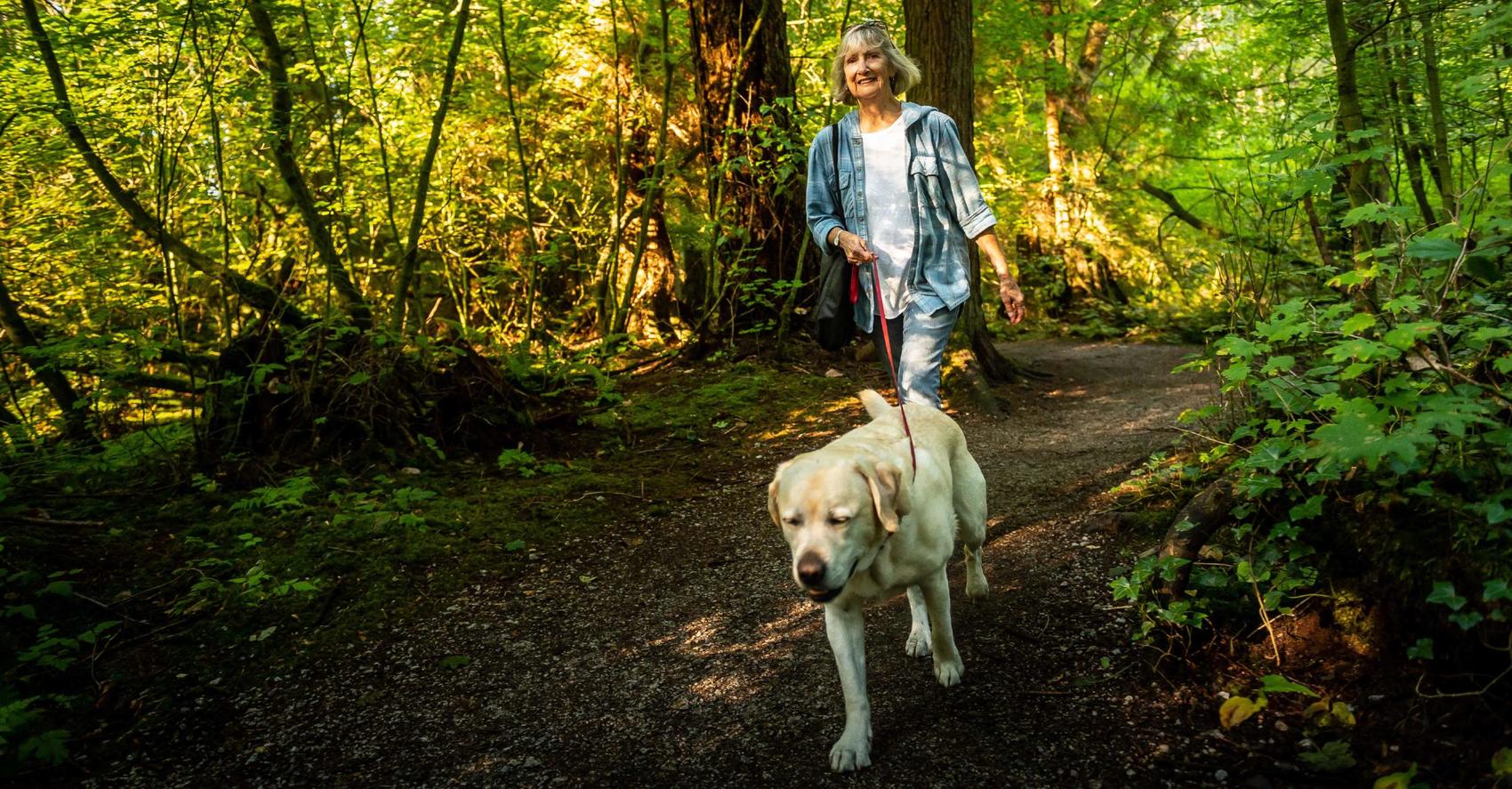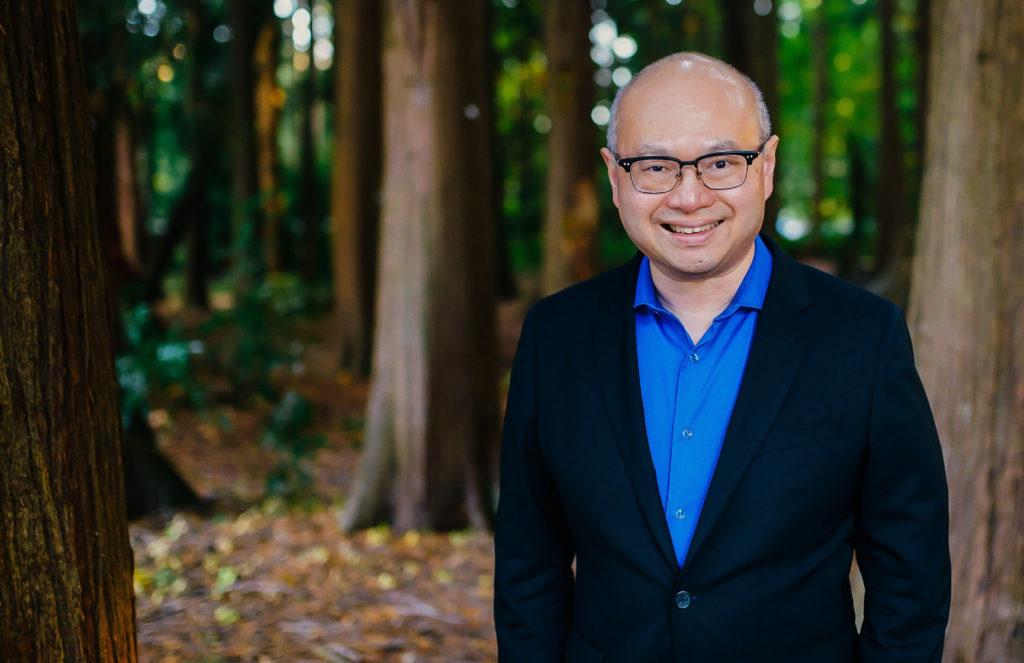How older adults can embrace new routines
By Carolyn Ali

Physical distancing has disrupted the lives of many active seniors; here’s how to adapt
Maybe you’re no longer going to the gym. Your book club is on hold. The friends you used to meet for coffee every week don’t want to venture out. You’re feeling a bit down—not to mention soft around the middle.
What do you do when physical distancing has thrown a wrench in your social routines?
As the weather gets cooler, we need to rethink the activities that usually sustain us through winter. Dr. Roger Wong, a clinical professor of geriatric medicine in UBC’s Faculty of Medicine, knows that especially for seniors, balancing the need to stay safe with staying physically and mentally fit can be challenging.
“Routines give us a sense of fulfillment,” Wong explains. “A change to a routine is a loss.” The first step to establishing new routines is to recognize that loss. “It’s okay to not feel okay right now,” he says. Telling people can help you move forward.
“Things are not going to change back to the way they used to be. This is important to recognize because it motivates us to look for change and find strategies to mitigate our losses.”
Dr. Roger Wong, UBC Faculty of Medicine
Adopting a productive mentality also matters. “Things are not going to change back to the way they used to be,” he emphasizes. “This is important to recognize, because it motivates us to look for change and find strategies to mitigate our losses.”

Photo: Andy Fang
Risk of social isolation
It’s not just seniors living in long-term care who are at risk of isolation. Dropping our regular social activities can threaten our physical and mental health.
“The negative impact of social isolation and loneliness on health is equivalent to smoking 15 cigarettes a day,” says Wong. It can shave off life expectancy by an average of eight years.
There’s no single way to combat isolation and build social and community connections. Instead, Wong offers many tools that work together to help us take positive action to build connections.
“Venture into something completely different. It’s not just young adults who do things outside the box.”
Dr. Roger Wong, UBC Faculty of Medicine
Do the next best thing
Instead of dwelling on what you can no longer do, “find the next best thing and do it,” Wong says. For example, he used to swim six days a week, but when the pools closed due to COVID-19 last spring, he started to hike regularly instead.
He encourages older adults to be flexible. “Venture into something completely different. It’s not just young adults who do things outside the box.”
Get creative socially
Some indoor social activities, such as playing bridge or bingo in groups, may no longer be a desirable option. Yet socializing with only those in our bubble can feel limiting. “It’s nicer to connect in person,” Wong acknowledges. “But as a stopgap, you can use a blend of virtual connection and some in-person contact to connect socially, provided you keep your social bubbles small.”
For example, you could take group bridge or bingo games online. “It does require some thinking and planning,” Wong says, but virtual activities can help us maintain and expand our social connections.
Many older adults are adept with technology such as FaceTime, WhatsApp and Facebook chat groups. Those who feel daunted by the learning curve can turn to neighbourhood and community groups for help.

Get physical while you get social
“What’s good for the body is good for the mind,” Wong reminds us. “So physical activity is especially important during times like this.”
It’s ideal if you can combine physical activity with social engagement. A UBC study shows that seniors stick with fitness routines when they work out together, and exercise helps mental health. However, physical distancing restrictions make group workouts a challenge. But yoga or tai chi classes that took place in neighbourhood parks over the summer could be moved online via Zoom, with participants maintaining social interaction virtually.
Tune into music
Music is a great way to combat social isolation, even if it’s virtual. People who used to attend community concerts can still enjoy virtual performances, such as UBC School of Music’s live online concerts and VSO @Home Digital performances, both recorded and livestreamed.
Wong encourages older adults who play an instrument to connect with other musically minded people online.
Reach across generations
Music can also help seniors connect with their children and grandchildren when they can’t meet in person. “Intergenerational involvement can be very helpful in times of crisis,” Wong says. “There’s some evidence to suggest that intergenerational engagement can be beneficial to both seniors and young people.”
Need help taking the first step? BC211 is a non-profit organization that provides information and referrals regarding community, government and social services in B.C. It can also refer family members and caregivers to services to help the seniors in their life.
“When you’re supporting seniors, you also have to think about supporting their families or their loved ones,” Wong says. “The family members may feel helpless. They don’t know where to turn. Perhaps Grandma used to go out and exercise in the community centre and hasn’t been going for the last six months. So caregiver burnout and stress becomes an issue.”
Wong believes a combination of seniors helping themselves, support from family, and initiative from individuals and groups in the community can help combat isolation.
Learn how you can help keep seniors connected
Carolyn Ali is a writer for UBC’s Brand and Marketing. This article was published October 14, 2020.
Feel free to republish the text of this article, but please follow our guidelines for attribution and seek any necessary permissions before doing so. Please note that images are not included in this blanket licence.


